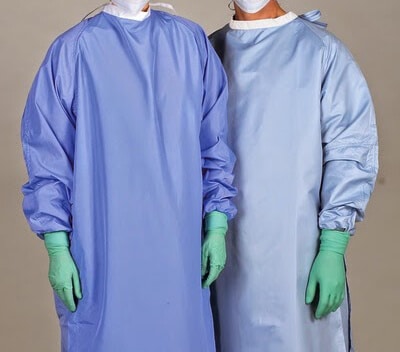The anti-microbial textile market is expected to continue to see growth in the coming years.
According to EuroWire:
“The chemical industry is focused to keep the business operations running along with ensuring the labor safety amid the COVID-19 pandemic. To recover the losses created by the decline in demand for various products, the companies are capitalizing on the escalating demand for products such as disinfectants and personal protective equipment. Many leading players in the chemical industry have expanded their business to enter into the production of safety products. Companies are resorting to advanced technologies in production to reduce the dependence on work-force.
“They are increasingly adopting advanced digital capabilities to integrate supply chain and logistics to ensure the effective delivery of products. The industry heads are seeking the real-time situation of their supply chains to identify potential weaknesses, especially in terms of geography, and strengthen it. The financial disclosures are being extended beyond the usual financial statements to deal with the risks that have aroused amid the COVID-19 pandemic.
“Textiles, with large surface area such as carpets, apparels, etc., under certain temperature and moisture conditions become vulnerable for microorganism growth. These microorganisms are not only harmful to human beings, causing various infections and diseases; but also lead to undesirable effects on textiles such as discoloration, odor and reduced strength of material. Antimicrobial chemicals help to control the growth of microorganisms in textiles as well as maintain their physical strength. Use of antimicrobial chemicals in textiles have been known from long times, but recent research and developments have brought superior antimicrobial chemicals in the market which can be used easily with high effectiveness in all application sectors, including, indoor, outdoor, apparels, technical, and industrial textiles.
“Antimicrobial chemicals are used in textiles in two different stages, i.e., during the spinning and during the finishing of textile process. In order to decrease health risks associated with infections from microorganisms, textile manufacturers are increasingly using antimicrobial chemicals in their products. Owing to superior physical and biological characteristics that antimicrobial chemicals impart, textile manufacturers are also found to have been using them as their marketing strategy and the market for these chemicals in the textile industry is expected to increase at a significantly high CAGR over the forecast period (2016-2026).
“Market Dynamics
“Hygienic textile materials, as a result of growing health awareness, are gaining popularity among consumers across the globe. Besides, consumption of antimicrobial textile in the wound care market is also increasing. In apparels such as socks, innerwear, etc., consumer preference for premium products with good antimicrobial properties is also developing, with high disposable income, population growth, and lifestyle changes being the key macroeconomic factors supporting the growth. The per capita consumption of natural and synthetic fibers has significantly increased and only a small fraction of textiles contain antimicrobial properties. Therefore, huge potential for antimicrobial chemicals’ market growth exist which can be capitalized by manufacturers.
“A growing number of health awareness programs, development of hospitals and surgical labs create a substantial platform for the use of antimicrobial textiles. Recently developed smart textiles, used for health monitoring also utilizes hygienic and bacteria free textile materials. Increasing consumption of smart textile materials is further expected to push the demand for antimicrobial textile chemicals over the coming decade. Although textile chemicals have several advantages associated with them, however, striking out a balance between their efficacy and potential hazardous effects, remains a key challenge for manufacturers. In order to avoid such harmful effects and legal challenges associated with the conventional antimicrobial textile chemicals, organic and plant based chemicals are emerging as their alternatives in the market.
“Long lastingness of antimicrobial chemicals in textiles remain another concern for manufacturers and special focus is given to maintain their chemical properties for over a long time, when exposed to varying outdoor and environmental conditions.
“Market Segmentation
“Global antimicrobial textile chemicals market can be segmented on the basis of source, product type, application, and region.
“On the basis of source, global antimicrobial textile chemicals market can be segmented as the following:
“Natural
“Synthetic
“On the basis of product type, global antimicrobial textile chemicals market can be segmented into:
“Quaternary Ammonium Compounds
“Triclosan
“Metallic salts
“Polybiguanides
“Chitosan
“Natural Polymers
“Others
“On the basis of application, global antimicrobial textile chemicals market can be segmented,
“Apparels
“Outdoor
“Industrial
“Home Furnishing
“Key Players
“Some of the key players identified across the value chain of global antimicrobial textile chemicals Market include
“Goulston Technologies
“Microban International
“Thomson Research Associates
“Centro Chino Co.
“H & R Johnson (India)
“Dow Microbial Control (The Dow Chemical Company)
“The research report presents a comprehensive assessment of the market and contains thoughtful insights, facts, historical data, and statistically supported and industry-validated market data. It also contains projections using a suitable set of assumptions and methodologies. The research report provides analysis and information according to market segments such as geographies, application, and Industry.”










